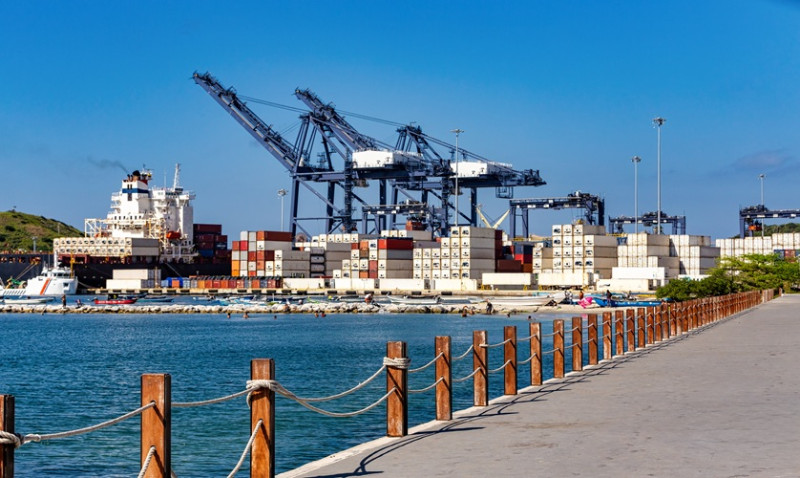
Whether you're a designer shipping bespoke interior products or a professional tradesperson looking to take your services further afield, understanding the essentials of exporting is key to keeping your projects and business on track. Exporting doesn’t have to be complicated, but staying ahead of regulations and processes is crucial for uninterrupted deliveries and customer satisfaction.
If you're based in the UK and looking to export home décor items, building materials, or even your own designed products to clients or partners internationally, this guide is crafted to help you navigate the essentials. From paperwork and customs requirements to packaging and choosing the right courier, we’ve got you covered with practical advice that will keep your goods moving smoothly across borders.
1. Understand Your Export Responsibilities
Before shipping anything out of the UK, it's vital to understand your responsibilities as an exporter. Whether you're a solo designer selling handmade pieces or a tradesperson shipping materials for an overseas renovation project, being compliant with UK export law ensures that your goods are cleared without delays.
Exporters must ensure that their goods do not breach any UK export controls. Some goods—like paints, chemical treatments, or specialist tools—may require export licenses. It’s always best to check with the UK Export Control Joint Unit if you’re unsure.
You’re also responsible for ensuring that the correct customs declarations are completed. If working with a freight forwarder or courier, they can often handle declarations for you—but the accuracy of the information provided remains your responsibility.
2. Prepare the Necessary Documentation
Every successful export begins with the right paperwork. Missing or incorrect documentation can lead to serious delays, additional costs, or even the seizure of goods at customs. Familiarise yourself with the documents required for your export destination.
Some of the essential export documents include:
- Commercial invoice – A bill for the goods from the seller to the buyer detailing the price, goods and payment terms.
- Packing list – Specifies how the goods are packed and listed for customs checks.
- Export declaration (using the Customs Declaration Service) – Required for all exports leaving the UK.
- Certificate of origin – Some countries require this to identify where your goods were manufactured.
Depending on your product, you might also need sanitary or phytosanitary certificates, insurance documents, or inspection certificates. Best practice is to speak with an experienced freight forwarder or customs advisor who specialises in your product category.
3. Choose the Right Shipping Method
Whether you're sending a few home accessories to a customer in Paris or shipping pallets of tile across the Atlantic, choosing the right logistics provider and shipping method makes a big difference in cost, delivery speed, and reliability.
Options include courier services for small packages, or freight services (air, road or sea) for larger or bulkier items. Couriers like DHL, FedEx and UPS are a good choice for ecommerce orders or high-value small loads, especially as they often include customs clearance and tracking.
For tradespeople exporting materials to construction projects, LTL (less than truckload) or FTL (full truckload) road freight might be more cost-effective for EU destinations. For projects further afield, sea freight may be slower but a far cheaper option for heavy items like bricks, timber panels or furniture.
4. Understand Tariffs and Duties
Duties and tariffs can add a significant cost to both you and the buyer, so it’s critical to be upfront and factor them into your pricing model. Since the UK has left the EU, exports to the EU or other global markets are subject to varying tariffs and duties depending on the product category and destination country.
You’ll need your product’s correct HS (Harmonised System) code to determine the applicable tariff. Use the UK Government's trade tariff lookup tool to find this code. HS codes help declare what you're shipping and ensure customs departments assess duties accurately.
When you provide the tariff code, product description and country of origin correctly, customs clearance goes much more smoothly. Be transparent with your overseas customers about any potential import duties they might face upon delivery, especially if selling DDU (Delivery Duty Unpaid).
5. Package Goods Securely for International Shipping
Exporting adds a layer of challenge when it comes to packaging – not only are goods travelling longer distances, but they’re also likely to be handled multiple times. Damaged goods due to poor packaging can result in delays, claims, and unhappy clients.
For DIY items, bespoke furniture, or ceramic tiles, it’s important to use suitable packaging materials – think double wall boxes, foam inserts, and strong outer wrapping. Palletising bulkier goods? Make sure your pallet is evenly balanced and shrink-wrapped securely. Label everything, and ensure that your outer packaging includes clear addresses and fragile stickers where necessary.
Also, any materials used to pack wood-based items (like timber doors or furniture) may need to comply with ISPM-15 regulations (heat-treated packaging timber) which are checked at customs. Always work with packaging suppliers who understand these requirements.
6. Work with Trusted Partners
Exporting doesn't have to be stressful—but it can become overwhelming without the right support. A freight forwarder, customs broker, or even your courier’s export team can provide the expert help you need to meet deadlines and avoid costly errors.
They help you navigate local import laws, advise on shipping routes, and ward off potential bureaucratic headaches. Look for partners with solid experience working in your niche—whether it’s home interiors, construction materials, or specialist design objects.
If you’re exporting frequently, consider setting up regular shipping arrangements with your partner. It ensures consistency, streamline documentation, and can often unlock bulk shipping discounts over time.
7. Stay Compliant and Plan for Delays
No matter how well prepared you are, it’s wise to expect occasional delays—especially during peak seasons or due to customs backlogs. Build this into your timelines and set realistic expectations for your clients abroad.
Also, stay up to date with any changes in export legislation. As global trade evolves (especially post-Brexit), new rules around data, customs checks, sustainability requirements and documentation can emerge. Regularly review guidance from HMRC and the Department for Business and Trade to keep your knowledge up-to-date.
Finally, keep detailed records of everything you've shipped – invoices, customs declarations, tracking logs and correspondence – for at least six years. It protects you in case of disputes or audits.
Summary: Key Export Tasks
| Step | Action |
|---|---|
| 1 | Check if your goods need an export license |
| 2 | Classify your goods using HS Tariff Codes |
| 3 | Get accurate paperwork ready (invoices, packing list, declaration) |
| 4 | Choose the right courier, freight, or logistics service |
| 5 | Package goods securely and label clearly |
| 6 | Communicate clearly with your international customers |
| 7 | Stay informed about changing export rules and policies |
Exporting from the UK doesn’t have to be a blocker for your interior design business, construction trade, or passion for selling handcrafted homeware. With the right preparation and support, it can be a natural extension of your UK-based success—and a rewarding new source of revenue.
Ready to export your products? Start small, stay organised, and always ask for advice from experienced logistics and customs professionals. That way, your goods (and your business) will keep moving forward.





